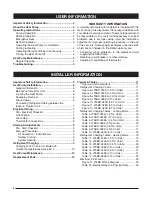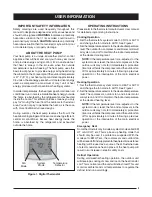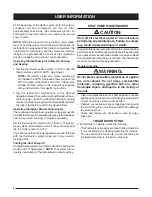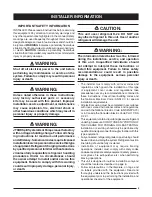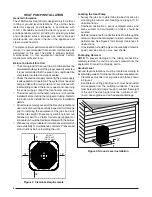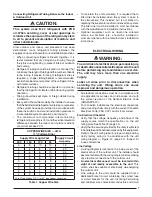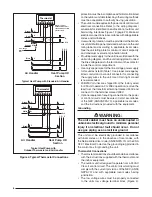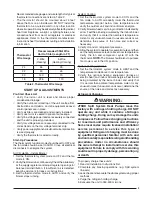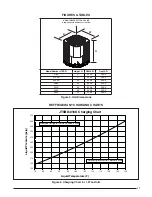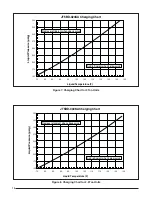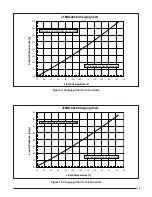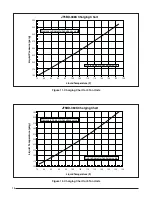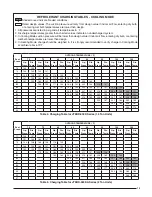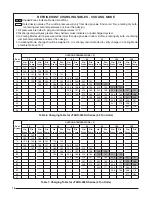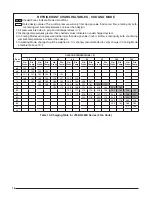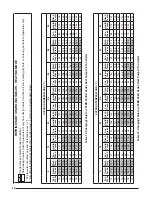
7
Connecting Refrigerant Tubing Between the Indoor
& Outdoor Unit
CAUTION:
This system uses R-22 refrigerant with POE
oil. When servicing, cover or seal openings to
minimize the exposure of the refrigerant system
to air to prevent accumulation of moisture and
other contaminants.
After outdoor and indoor unit placement has been
determined, route refrigerant tubing between the
equipment in accordance with sound installation practices.
• When connecting refrigerant linesets together, it is
recommended that dry nitrogen be fl owing through
the joints during brazing to prevent internal oxidation
and scaling.
• Refrigerant tubing should be routed in a manner that
minimizes the length of tubing and the number of bends
in the tubing. If precise forming of refrigerant lines is
required, a copper tubing bender is recommended.
Avoid sharp bends and contact of the refrigerant lines
with metal surfaces.
• Refrigerant tubing should be supported in a manner
that the tubing will not vibrate or abrade during system
operation.
• Tubing should be kept clean of foreign debris during
installation.
• Every effort should be made by the installer to ensure
that the fi eld installed refrigerant containing components
of the system have been installed in accordance with
these instructions and sound installation practices to
insure reliable system operation and longevity.
• The maximum recommended interconnecting
refrigerant line lengths is 75 ft. and the vertical elevation
difference between the indoor and outdoor sections
should not exceed 20 ft.
ELECTRICAL WIRING
WARNING:
To avoid risk of electrical shock, personal injury,
or death, disconnect all electrical power to the unit
before performing any maintenance or service.
The unit may have more than one electrical
supply.
Label all wires prior to disconnection when
servicing the unit. Wiring errors can cause
improper and dangerous operation.
• All electrical connections must be in compliance with
all applicable local codes and ordinances, and with
the current revision of the National Electric Code
(ANSI/NFPA 70).
• For Canadian installations the electrical connections
and grounding shall comply with the current Canadian
Electrical Code (CSA C22.1 and/or local codes).
Pre-Electrical Checklist
Verify that the voltage, frequency, and phase of the
supply source match the specifi cations on the unit
rating plate. See Table 18 (page 24).
Verify that the service provided by the utility is suffi cient
to handle the additional load imposed by this equipment.
Refer to the unit wiring label for proper voltage wiring.
Verify factory wiring is in accordance with the unit
wiring diagram or Figure 13 (page 23). Inspect for
loose connections.
Line Voltage
• A wiring diagram is located on the inside cover of the
electrical box of the outdoor unit. The installer should
become familiar with the wiring diagram before making
any electrical connections to the outdoor unit.
•
An electrical disconnect must be located within
sight of and readily accessible to the unit
. This
switch shall be capable of electrically de-energizing
the outdoor unit.
• Line voltage to the unit should be supplied from a
dedicated branch circuit containing the correct fuse
or circuit breaker for the unit. Incoming fi eld wiring
and minimum size of electrical conductors and circuit
COPPER WIRE SIZE — AWG
(1% Voltage Drop)
Supply Wire Length-Feet
Supply Circuit
Ampacity
200
150
100
50
6
8
10
14
15
4
6
8
12
20
4
6
8
10
25
4
4
6
10
30
3
4
6
8
35
3
4
6
8
40
2
3
4
6
45
2
3
4
6
50
2
3
4
6
55
1
2
3
4
60
Wire Size based on N.E.C. for 60° type copper conductors.
Table 1. Copper Wire Size
• To maintain the unit's warranty, it is required that a
fi lter drier be installed when the system is open to
the atmosphere. This includes, but is not limited to,
replacing the evaporator and/or condenser of a system.
The fi lter drier must be installed in strict accordance
with the manufacturer’s installation instructions.
• Optional equipment such as liquid line solenoid
valves, low ambient, etc., should be installed in
strict accordance with the manufacturer’s installation
instructions.


